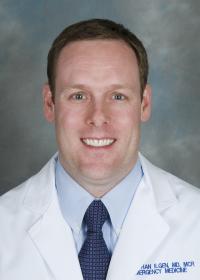UW Emergency Medicine Program Making Strides to Lower Hep C Spread
The Goal
The month of May is Hepatitis Awareness Month, with May 19th specifically focused on raising awareness about testing for Hepatitis. According to the most recent data from the Washington Department of Health, there were 1.6 acute infections reported per 100,000 persons in 2021, representing a 60% increase from the 1.0 infections per 100,000 in 2017.
This comes as Washington state is currently under a first-of-a-kind approach to eliminating hepatitis C. In September 2018, Governor Jay Inslee unveiled a new approach to eliminate hepatitis C in the state by 2030. The plan focuses on hepatitis C elimination through combined public health efforts and a new medication purchasing approach, according to the DOH.
Meanwhile, a newer program underway at the University of Washington, in the Department of Emergency Medicine Section of Population Health, is helping to achieve that greater goal.
The FOCUS Program, or Frontlines of Communities in the United States, is funded by Gilead and is a public health initiative that aims to decrease the stigma underlying viral testing and diagnosis and bring HCV and HIV screening and linkage to care into alignment with the Centers for Disease Control (CDC), the U.S. Preventative Services Task Force (USPSTF), and state and local health department guidelines.
Local impact
According to Olivia Hood, the Program Manager for the Section of Population Health, it all starts when a patient enters the Emergency Department (ED) at either Harborview Medical Center, UWMC Montlake, or UWMC Northwest.
“If you come in, and for any reason, you have a blood draw—and you haven’t had an HIV or hepatitis C test within 12 months, the provider may suggest you get a screening test,” explained Hood. “It’s a silent disease. A lot of patients don’t know unless they catch it in the ED like this.”
If a test comes back positive for hepatitis C, members of the FOCUS team will call the patient, informing them of the result, and link them to a clinic for treatment.
Jose De Los Rios, the Linkage to Care Coordinator for the FOCUS program, noted that they do face some challenges within that process. Many patients who present to the ED, and test positive for hepatitis C, are unhoused, therefore lacking contact information. If the test result comes back after they leave the ED, tracking them down again can be difficult.
“It’s absolutely a challenge. There are cases where we don’t have any information about the patient. It’s disappointing, but when we do have a case where we have a phone number, we take advantage of it and get people into care,” said De Los Rios.
For patients without contact information, an alert will be generated within the FOCUS system, so if they do come back to the ED, FOCUS members will get an email alert so they can try and intercept the patient.
“A lot of times you become an investigator,” said De Los Rios. “You start reading their information and find where they like to hang out. You see if they have any case managers or organizations that they work with. Just by getting the names of those places, you start looking for phone numbers, and you start making phone calls. And when you call them and tell them you have a cure for their disease, it’s extremely great news for them. And it’s so rewarding for us.”
Since the programs start in October 2021, testing has gone up dramatically. According to Hood, hepatitis C screening has increased by 600% compared to before the FOCUS program. HIV screening also increased by 400%.
“Clearly, since we’ve had such an increase, the screening wasn’t being done before,” said Hood. ‘So many of these patients are only getting their care through the ED, and they’re not going to catch this anywhere else. Which is why I believe we’ve been able to catch a lot of new diagnoses.”
Looking to the Future
Hood and De Los Rios said they remain positive about eradicating Hepatitis C, but they believe the work will continue past Governor Inslee’s goal of 2030. They agree that realistically, it may happen within five years of 2030.
“Years pass much quicker than they seem and although I’m hopeful for where we’ll be at come 2030, we have our work cut out for us to get there. Every patient we see faces a unique set of challenges for curing their HCV that are oftentimes outside of our control. Our team is here for the long haul to find the patients who need this treatment and get them cured,” said Hood.
The Seattle FOCUS Program is now assisting Kitsap County to start its own FOCUS program, to help reach more people. Hood also said they would like to see more areas across the state get involved, especially on the East side of Washington.
Their goal for the next few years is to focus on increasing screening even more. Right now, only 10% of patients are being screened since the provider must click for the test to be ordered. The goal is to get that number much higher, around 80-90%, and to make the testing system automated. That way, no patient will be missed.
“Patients didn’t know they had this diagnosis and they’re so grateful because unless they came through our ED, and this program was happening, they may have never caught it,” said Hood.








